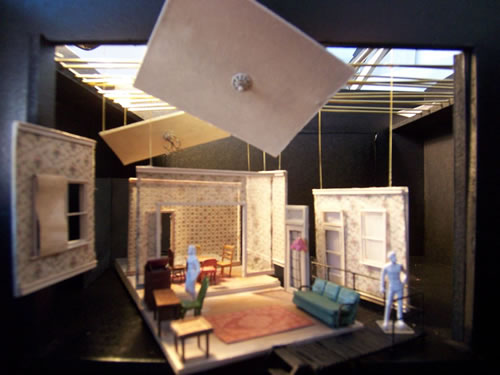I just flew back to the East Coast from one of the most exciting reviewing trips in my six-year-long career as The Wall Street Journal‘s drama critic. I saw Kansas City Repertory Theatre’s The Glass Menagerie and Chicago Shakespeare Theater’s Macbeth, and both were extraordinary. Here’s an excerpt.
* * *
The greatest of all American plays has received a production worthy of its beauty and truth. Tennessee Williams’ “The Glass Menagerie,” one of the immortal masterpieces of 20th-century theater, is currently being performed by Kansas City Repertory Theater in a staging by David Cromer, whose Writers’ Theatre revival of “Picnic” was the best show I saw last year, not just in Chicago (where Mr. Cromer and most of his production team are based) but anywhere in America. His “Glass Menagerie” is fully as impressive. Mr. Cromer has the uncanny ability to take a too-familiar script and make it seem entirely new–yet it is his special gift to serve the plays that he stages, rather than twisting them into unrecognizable and irrelevant shapes. Such is the essence of recreative genius.
 So what has Mr. Cromer done with “The Glass Menagerie”? To begin with, he has collaborated closely with his designers to create a visual environment for Williams’ play that looks nothing like any “Glass Menagerie” I’ve ever seen, even though it is fundamentally faithful to both the spirit and the letter of the text. At the center of Collette Pollard’s set is a cramped, shabby tenement apartment identical to the one described in Williams’ stage directions–except that the walls of the living room have been ripped away and are hanging askew in mid-air. Throughout the evening a stream of images related to the play is projected on these walls: words and phrases plucked from the script, “home movies” of the characters as seen in their youth, live close-ups of the actors that are shot by video cameras concealed on the set.
So what has Mr. Cromer done with “The Glass Menagerie”? To begin with, he has collaborated closely with his designers to create a visual environment for Williams’ play that looks nothing like any “Glass Menagerie” I’ve ever seen, even though it is fundamentally faithful to both the spirit and the letter of the text. At the center of Collette Pollard’s set is a cramped, shabby tenement apartment identical to the one described in Williams’ stage directions–except that the walls of the living room have been ripped away and are hanging askew in mid-air. Throughout the evening a stream of images related to the play is projected on these walls: words and phrases plucked from the script, “home movies” of the characters as seen in their youth, live close-ups of the actors that are shot by video cameras concealed on the set.
Radical though it sounds, all this is no more than a modern-day elaboration of what Williams had in mind for the original production of “The Glass Menagerie,” in which he called for “magic-lantern” slides to be projected on one wall of the set. The images on the slides, he explained in his production notes, were meant to “give accent to certain values in each scene.” The slides were omitted from the 1945 Broadway staging, but various attempts have been made since then to do something resembling what Williams had in mind.
Kansas City Rep’s projections, designed by Jeffrey Cady, are astonishingly effective, not least because they are so tightly woven into Mr. Cromer’s conception of the play, in which the acting is as naturalistic as the setting is surreal. Nowadays many productions of “The Glass Menagerie” run to quasi-operatic exaggeration, but the four actors whom Mr. Cromer has cast in Williams’ tale of a St. Louis family teetering on the far edge of despair have opted instead for simple understatement. Their characterizations are all fresh and unexpected….
Barbara Gaines, Chicago Shakespeare’s artistic director, has given us a modern-dress “Macbeth” set in a glossy world of press conferences, cocktail parties and departure lounges. Macbeth and his wife (Ben Carlson and Karen Aldridge) are an up-to-the-minute power couple, a crisply plain-spoken soldier married to a coarse, slutty trophy wife. Such devices may seem trendy in the telling, but Ms. Gaines and her first-class cast have instead used them as the building blocks of a dead-serious “Macbeth” that has the immediacy of a fast car shrieking down a long, straight stretch of road….
* * *
Read the whole thing here.
Here is a video clip from Kansas City Rep’s Glass Menagerie:
Terry Teachout on the arts in New York City
An ArtsJournal Blog
